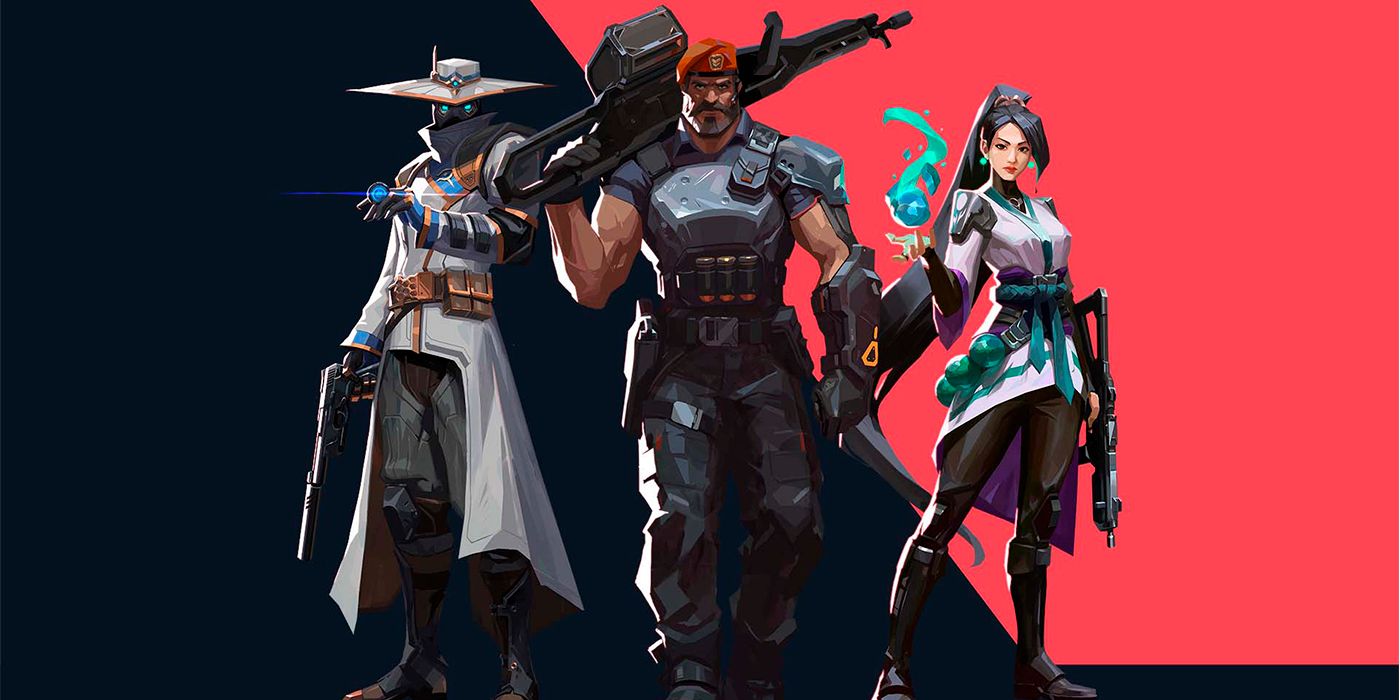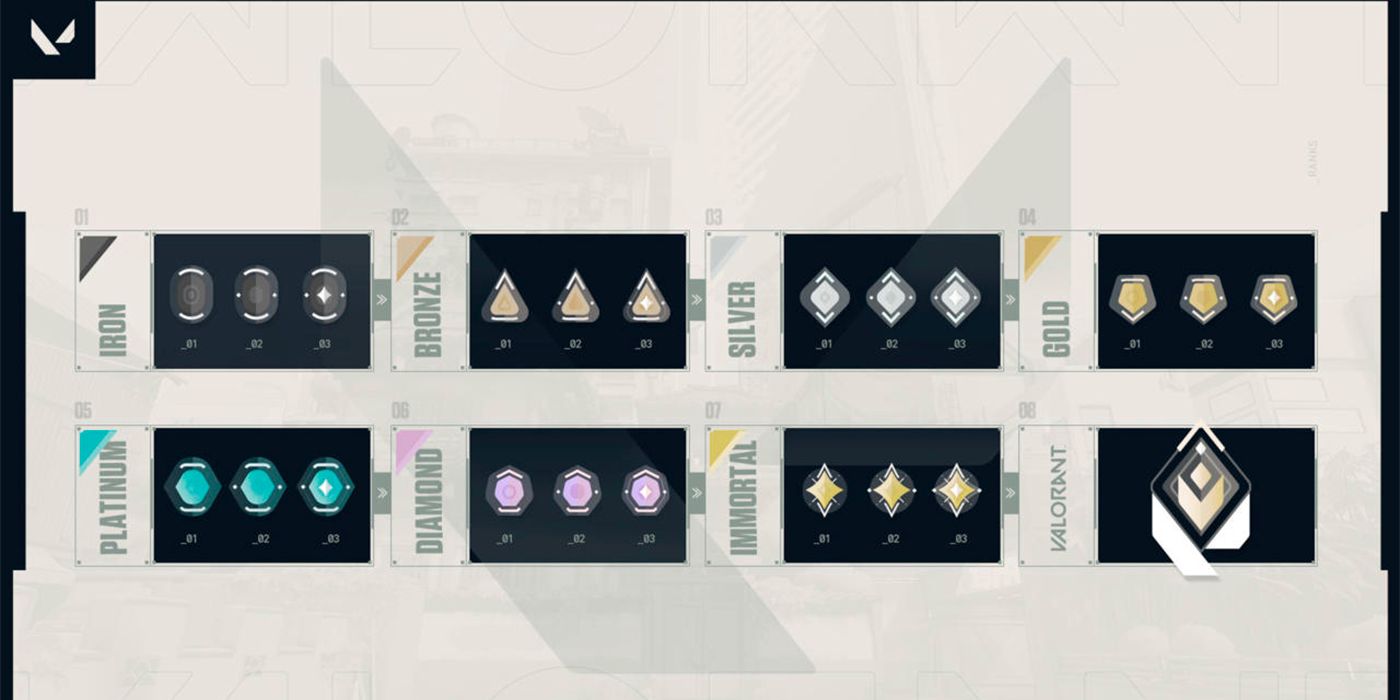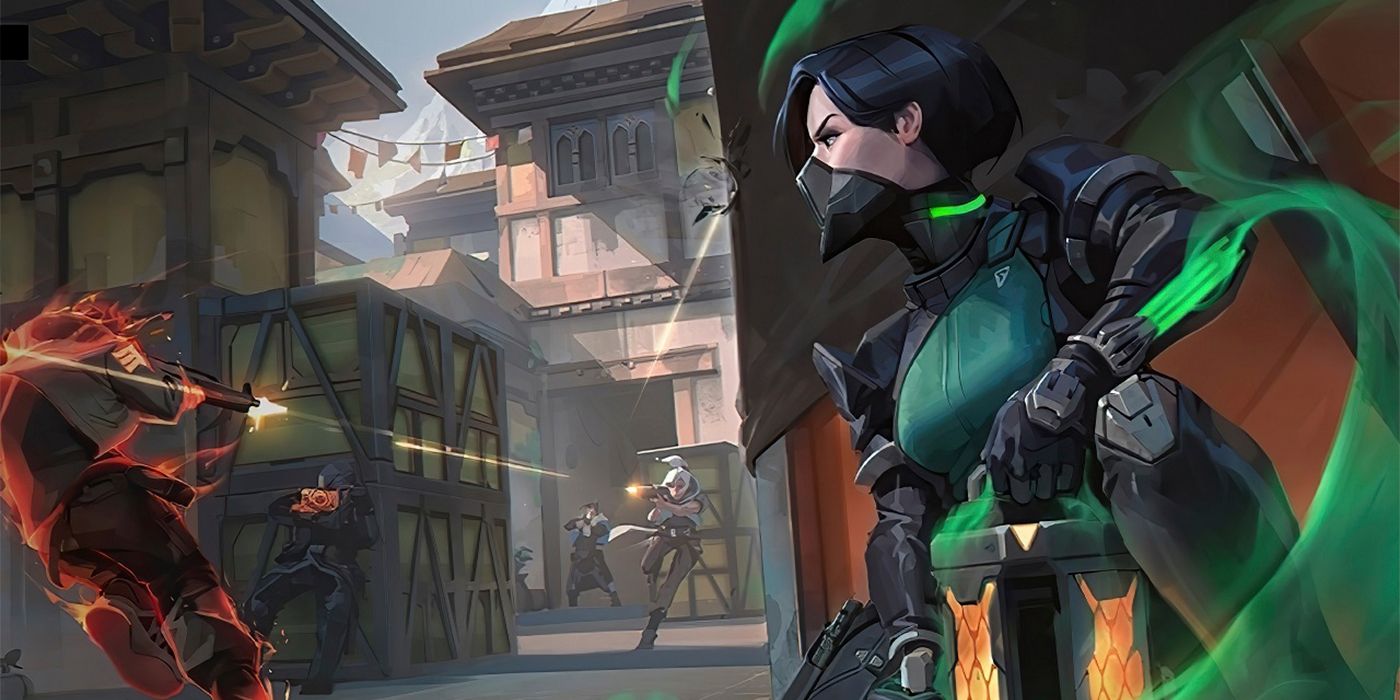While still in closed beta, Valorant has recently been updated to include a competitive game mode. This is much like other online competitive multiplayer experiences such as Overwatch or League of Legends. Players who wish to have a more competitive experience by playing with those of a similar skill level can now do so through the use of the competitive matchmaking function. Depending on the player's skill level and how well they perform against higher skilled players, they will receive a rank that indicated how "good" they are at the game.
However, Valorant's ranking system is in beta along with the game so understanding how to increase your rank and what your rank means can be difficult. There are eight different ranks with seven having three sub ranks, and figuring out how to progress through those ranks may seem like a daunting task. However, this guide will teach players how to get into competitive matchmaking, how to get a starting rank, where their rank places them among other players, and how to increase (or decrease) their rank.
Competitive Ranks in Valorant
As mentioned before, there are eight ranks in competitive Valorant. Seven of them have three subranks with the final rank being its own sole ranking. The eight ranks and subranks are as follows:
• Iron 1, 2, and 3
• Bronze 1, 2, and 3
• Silver 1, 2, and 3
• Gold 1, 2, and 3
• Platinum 1, 2, and 3
• Diamond 1, 2, and 3
• Immortal 1, 2, and 3
• Valorant
Iron 1 is the lowest rank a player can be while Valorant is the highest. Unlike other competitive games, the higher the rank number the higher your rank it. For example, Iron 1 is a lower rank than Iron 3.
Getting Ranked in Valorant
Before hopping into a round of competitive players will first need to have played 20 casual Valorant matches. After this, competitive matchmaking will be unlocked for players to start really testing their skills. However, players will need to play five placement matches to get their starting rank.
During the placement matches, players will play against players and teams of different skill levels. Depending on how well the player performs during these first five matches will determine what rank they start at. After getting a starting rank, players will need to play additional matches to increase their ranking over time.
Rank progressions will vary between players and ranks. Players of lower ranks will progress faster as it takes less effort to progress between lower ranks. However, a player of higher rank will need to grind much longer and harder to progress to even higher ranks. It is important to note that rank progression is based on a player's individual performance as opposed to a team's performance. So even if a player loses a match they can still progress through the ranks if the player performed well individually.
Also, it is much easier to go down in the ranks than it is to progress. It can take several great matches in a row to progress in the higher ranks, while it only takes one or two poor matches that can take a player down even multiple ranks. However, there is no rank decay which means that if a player does not play ranked matches for an extended period of time they will not lose their rank.
And lastly, players can only play competitive matches with other players who are no less than 2 ranks away from their own. This means that someone who is Immortal cannot play with someone below Platinum rank, and if a player drops below Platinum while playing they will no longer be able to play with the player who is immortal.
Valorant is in closed beta on PC.



